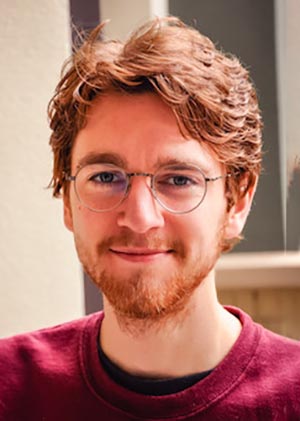
Samuel Grauer plans to find new ways to gather measures in complex environments, such as characterizing the shock train in the internal flowpath of a hypersonic aircraft. IMAGE: ISTOCK/@DEVRIMB
Mechanical engineering assistant professor eyes enhanced diagnostics
By improving measurements in extreme environments like aero-engine combustors and hypersonic aircraft flowpaths, Samuel Grauer hopes to fuel innovations
9/28/2020
By Erin Cassidy Hendrick
UNIVERSITY PARK, Pa. — With the goal of tackling complex measurement problems to improve technology, Samuel Grauer will join the Penn State College of Engineering’s Department of Mechanical Engineering (ME) as an assistant professor in January 2021.
Grauer is currently a postdoctoral fellow at the Georgia Institute of Technology.
Building on his previous work, he plans to employ statistical techniques, such as Bayesian data analysis and machine learning, at Penn State to glean crucial information from systems where the ability does not currently exist.
In particular, Grauer plans to target projects that require precise, multi-parameter imaging in extreme conditions, such as reconstructing interacting 3D flames in a practical, high-pressure combustor or characterizing the shock train in the internal flowpath of a hypersonic aircraft.
Grauer explained that many engineering systems feature complex measurement problems where any given sensor can only provide partial information about key variables such as pressure, temperature and velocity fields. In order to accelerate the design of these systems and improve their operation, it is necessary to combine information from multiple sensors and fundamental physical models to understand the system and monitor controls-relevant parameters.
“As a general matter, whenever you aim to push scientific and engineering frontiers — whether in heat transfer, fluid flow, combustion or other fields — progress is enabled by the ability to make measurements faster, more accurately, with greater precision, in more restrictive environments,” Grauer said. “Statistical analysis can provide the means to do so.”
Grauer also noted the growing emphasis placed on uncertainty quantification and data assimilation in ME, which are required to validate the numerical models used to tackle everyday design problems. The Bayesian framework used by Grauer in his research is a natural fit for these challenges.
As he prepares to begin his career at Penn State, Grauer said the breadth of the University’s expertise and platforms that support interdisciplinary work, especially the Institute for Computational and Data Sciences, will be critical in furthering his research goals.
“There are so many synergies I can tap into,” he said. “In ME, there are so many fantastic faculty members who are interested in the fundamental science and application of combustion and turbulence research, which is closely related to the diagnostic problems I’m interested in.”
Grauer hopes his natural passion for the material is translated to his students.
“I really enjoy the physics and coding aspects of ME,” he said. “By describing how these codes work, getting students excited about how you can use computational tools to solve complicated problems, I think my enthusiasm will come across pretty clearly.”
Whether the classes are virtual or in-person, he explained the ultimate goal is the same.
“It’s always important to engage with people and make connections; that is just the truth of the matter,” he said.




